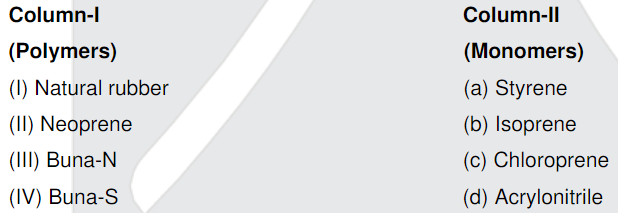Which of the following is correct , for the mitochondrial ETS ?
Number of ATP molecules synthesised does not depend on nature of electron donor
Ubiquinon receives reducing equivalents via FADH2 also
Cytochrome c is a large protein, attached to outer surface of inner mitochondrial membrane.
Complex IV has cyt a and cyt a3, but no copper centres.
The correct Answer is:B
To solve the question regarding the mitochondrial electron transport system (ETS), we will analyze the provided options step by step.
1. Understanding the Mitochondrial Structure:
- The mitochondria have a double membrane structure: an outer membrane and an inner membrane. The space between these membranes is called the intermembrane space, and the space inside the inner membrane is known as the matrix.
2. Location of the Electron Transport System:
- The electron transport system occurs at the inner mitochondrial membrane. This is where various complexes and carriers are located that facilitate the transfer of electrons.
3. Components of the Electron Transport Chain:
- The ETS consists of several complexes (Complex I, II, III, and IV) and mobile carriers (like ubiquinone and cytochrome c).
- Complex I (NADH dehydrogenase), Complex II (succinate dehydrogenase), Complex III (cytochrome bc1 complex), and Complex IV (cytochrome c oxidase) are involved in the transfer of electrons.
4. Role of Ubiquinone:
- Ubiquinone (also known as coenzyme Q) is a mobile hydrogen carrier that accepts electrons and protons, thus playing a crucial role in the electron transport process.
5. ATP Synthesis and Electron Donors:
- The number of ATP molecules synthesized does depend on the nature of the electron donor. For example, NADH contributes to the pumping of more protons compared to FADH2, leading to the synthesis of more ATP from NADH than from FADH2.
6. Evaluating the Options:
- Option 1: "Number of ATP molecules synthesized does not depend on the nature of electron donor." - This statement is incorrect.
- Option 2: "Ubiquinone receives reducing equivalents via FADH2." - This statement is correct.
- Option 3: "Cytochrome C is a large protein." - This statement is incorrect; cytochrome c is a small protein.
- Option 4: "Complex IV has cytochrome A and A3 but no copper centers." - This statement is incorrect; Complex IV does contain copper centers.
7. Conclusion:
- The correct statement regarding the mitochondrial electron transport system is Option 2, which states that ubiquinone receives reducing equivalents via FADH2.
- The mitochondria have a double membrane structure: an outer membrane and an inner membrane. The space between these membranes is called the intermembrane space, and the space inside the inner membrane is known as the matrix.
- The electron transport system occurs at the inner mitochondrial membrane. This is where various complexes and carriers are located that facilitate the transfer of electrons.
- The ETS consists of several complexes (Complex I, II, III, and IV) and mobile carriers (like ubiquinone and cytochrome c).
- Complex I (NADH dehydrogenase), Complex II (succinate dehydrogenase), Complex III (cytochrome bc1 complex), and Complex IV (cytochrome c oxidase) are involved in the transfer of electrons.
- Ubiquinone (also known as coenzyme Q) is a mobile hydrogen carrier that accepts electrons and protons, thus playing a crucial role in the electron transport process.
- The number of ATP molecules synthesized does depend on the nature of the electron donor. For example, NADH contributes to the pumping of more protons compared to FADH2, leading to the synthesis of more ATP from NADH than from FADH2.
- Option 1: "Number of ATP molecules synthesized does not depend on the nature of electron donor." - This statement is incorrect.
- Option 2: "Ubiquinone receives reducing equivalents via FADH2." - This statement is correct.
- Option 3: "Cytochrome C is a large protein." - This statement is incorrect; cytochrome c is a small protein.
- Option 4: "Complex IV has cytochrome A and A3 but no copper centers." - This statement is incorrect; Complex IV does contain copper centers.
- The correct statement regarding the mitochondrial electron transport system is Option 2, which states that ubiquinone receives reducing equivalents via FADH2.
Similar Questions
Which of the following is not correct?
View SolutionWhich of the following match is correct ?
View SolutionWhich one of the following is incorrect statement for mitochondrial ETC and oxiative phosphorylation?
View Solution
Which of the following combination is correct:
View Solution
Which of the following combination is correct:
View SolutionMitochondrial DNA is :-
View SolutionWhich of the following statements regarding mitochondrial membrane is correct ?
View SolutionWhich of the following statements regarding mitochondrial membrane is NOT correct ?
View SolutionWhich of the following statement is not correct ?
View SolutionDuring carbohydrate metabolism, NADH is produced in which of the following location(s)?
I. Cytosol
II. Mitochondrial matrix
Ill. Nucleus
View Solution
